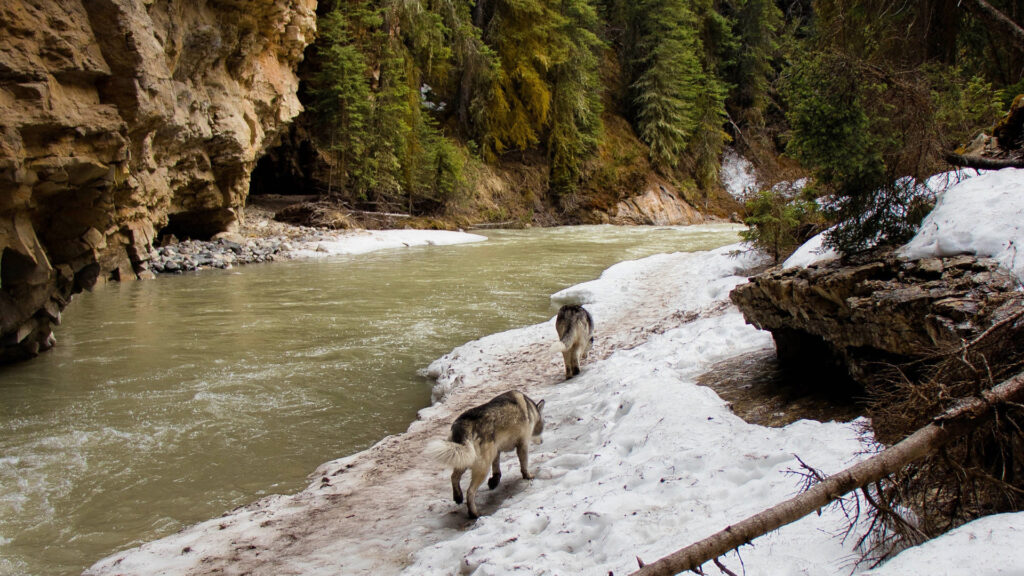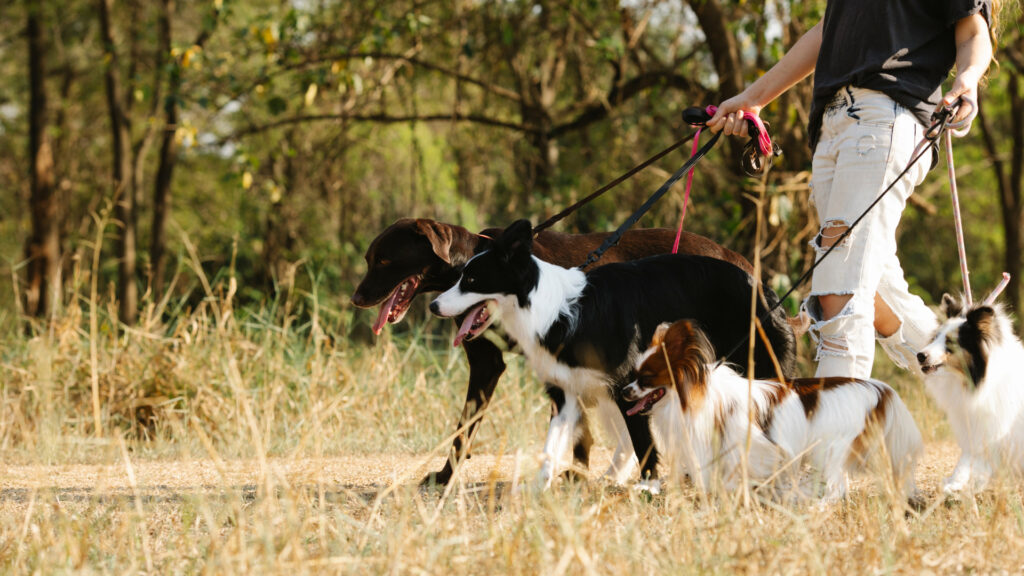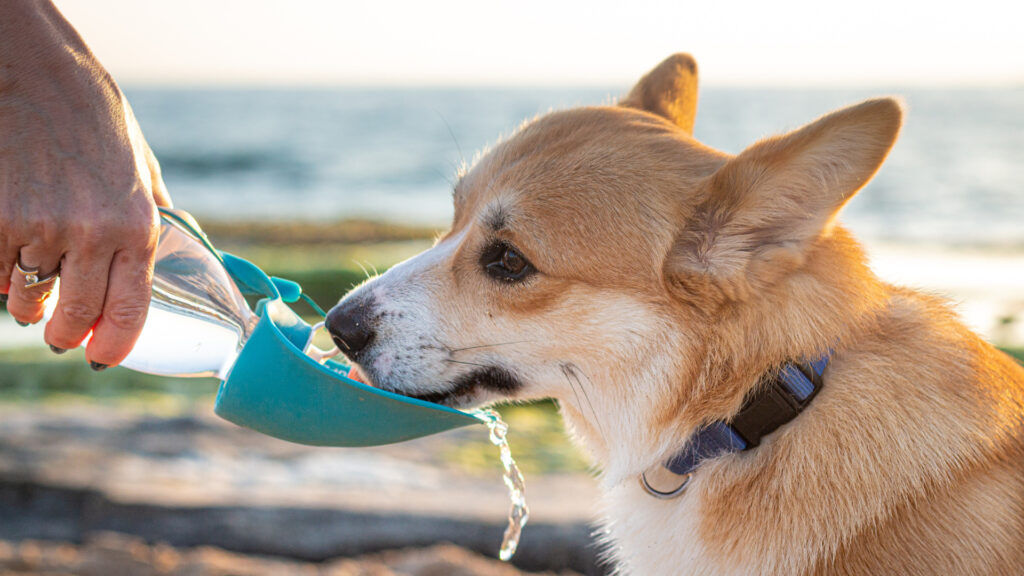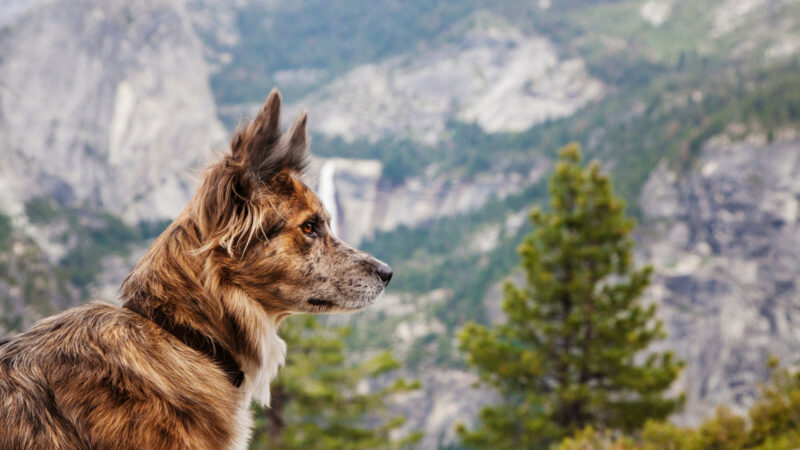Table of Contents Show
If you’re a parent who has traveled to sites within the National Park System, it’s likely you’ve heard of the Junior Ranger program. This program allows kids to learn about the history, culture, and landscape of the parks.
They fill out a packet with fun activities then return to the visitor center, take a pledge, and earn a badge. But did you know that there’s also a Bark Ranger program?
Although dogs can’t read or write, you’ll find ways that you and your furry friend can enjoy the parks safely and responsibly. Just stop by the visitor center and ask if they have a Bark Ranger program when you arrive.
Today, we will take a closer look at this special program and other interesting facts about dogs in the National Park Service.
What Are the B.A.R.K. Principles?
The National Park Service has a special program just for our furry friends. Some sites offer the chance for a pet to become a bark ranger by following the B.A.R.K. principles. The program is designed to help guests and their pets enjoy the parks.
The “B” stands for bagging your pet’s waste. Like the Leave No Trace principles, the B.A.R.K. principles help keep the environment clean so everyone can enjoy these special places.
The “A” stands for always leashing your pet. Your pet may be the most well-behaved dog in the world. But other dogs around might not be. You also may encounter wildlife that could come after your dog. By keeping your furry friend on a leash, you’re not only protecting others from a loose dog but you’re also keeping your dog safe.
The “R” stands for respecting wildlife. Keeping your dog on a leash is part of this. However, respecting wildlife also means staying a safe distance. This will also keep your pet calm.
Finally, the “K” stands for knowing where you can go. This is very important to the preservation of the national park sites. You may be able to walk around an archeological site, but officials don’t want dogs digging there so they’ve posted signs explaining that dogs aren’t allowed.
Abiding by the principles of the “K” will also keep your pet safe. Pets can walk on most trails but some have dangerous and steep drop-offs and huge boulders. So obey the posted signs about where you can and can’t take your pet.

What Is a Bark Ranger?
The Bark Ranger program is part of the Healthy People Healthy Parks Initiative. According to the National Park Service, “Healthy Parks Healthy People works to advance the fact that all parks … are cornerstones of people’s physical, mental, and spiritual health, social wellbeing; and sustainability of the planet.”
Many people consider their dog their best friend. When visitors go to a national park site, they bring along their pets because dogs make them happy.
People and dogs can enjoy the outdoors together, getting exercise, connecting with nature, and socializing with friends. This is why the Bark Ranger program is part of this initiative.
Not all national park locations have the Bark Ranger program, but some do. It’s uniquely designed by each park to help visitors and their pets enjoy all that particular site has to offer. Activities may include taking a walk with a ranger, making a pledge with your pet, or simply following the B.A.R.K. principles.
For example, at Lake Roosevelt National Recreation Area, you have four activities in the Bark Ranger pamphlet. You must complete two with your pet and follow the B.A.R.K. principles during your visit.
Then you return to the visitor center to take the oath to become a Bark Ranger. Some parks give your dog a special tag; others give bandanas.
Where Can Your Pet Become a Bark Ranger?
Some of the major national parks like Acadia, Great Smoky Mountains, Zion, and Yosemite have Bark Ranger programs. But you won’t find them at all of the 63 national parks. Sometimes this is because dogs aren’t permitted on many of the trails. Not all national parks are dog-friendly.
Other locations like Curecanti National Recreation Area, the Eleanor Roosevelt National Historic Site, and John Day Fossil Beds National Monument also have the Bark Ranger program. You’ll find over 400 sites within the National Park System and a few dozen with the Bark Ranger program.
To find out if a park you’re visiting has this special program for your furry friend, check the park’s website. Sometimes the Bark Ranger program is listed under the “Learn About the Park” tab or “Things To Do” section.
If it’s not listed at all, the program may not be provided at that particular site or it could just not be on the website. You can call the visitor center to ask.
Do Dogs Work in National Parks?
One park doesn’t just welcome pets; it employs them. Glacier National Park in Montana became the first National Park Service unit to use an employee-owned dog to help manage habituated wildlife. These animals no longer fear humans because of their constant exposure.
Gracie, a professionally trained border collie, started moving bighorn sheep and mountain goats out of areas of high visitor use in 2016. By doing this, it’s less likely guests will feed the wildlife, and it’s less likely the wildlife will act aggressively. Gracie works as a wildlife shepherd! She has definitely earned a Bark Ranger badge.
Her owner, Mark Biel, also helps teach visitors about wildlife safety in the park.
Keep in Mind: Unfortunately, not all national parks are pet-friendly. If you’re wanting to bring your pet along, these are the most Dog-Friendly National Parks
What Is the Bark Ranger Ambassador Program?
Some national park sites also have the Bark Volunteer-In-Parks Program. The ambassadors are often seen walking through the park with their own dogs to help other pet owners act responsibly. T
hese ambassadors try to reduce the number of non-compliant dog incidents and increase awareness of positive pet behaviors.
Delaware Water Gap National Recreation Area remains one of the most pet-friendly parks in the country with less than ten miles of trails off-limits to pets. In this park, ambassadors bring their Bark Ranger pets along with them while volunteering.
They participate in the “Pop-Up for Pups” events which are tents set up at popular trailheads or sites with materials just for pet owners. Visitors can also take the oath to become a Bark Ranger here.

Are Dogs Permitted on Hiking Trails in National Parks?
National parks allow dogs on many hiking trails. However, as the B.A.R.K. principles remind us, you’ll find that some places aren’t safe for dogs. Do some research ahead of time to learn which trails are dog-friendly.
In addition, there could be posted notices for bear activity or peregrine falcon nesting. Sometimes trails close for a week or longer to protect the wildlife and visitors.
5 Tips for Hiking With Dogs
When you head to a national park with your furry friend, go prepared. We have five tips for hiking with dogs so that you protect your pet’s health and well-being.
Research the Trail First
As already mentioned, research the trails before arriving. Are they dog-friendly? Are there dangers or hazards? Look at the trail map, pay attention to the elevation gain, and read reviews. Other hikers will usually mention how their dog did on the hike and any potential problems.
Pro Tip: Are you new to traveling with your furry friend? Then you need to read these Insider Tips for Successfully Camping with Dogs!
Make Sure Your Dog Is in Good Physical Shape
Schedule a visit with your vet and make sure your Bark Ranger is in good physical shape before putting them through the rigors of a difficult trail.
Walking around the neighborhood for 30 minutes at night differs a lot from climbing rocks and tiptoeing along canyon edges. You also want to make sure you’re up-to-date on all vaccines.
Bring Along Food and Water
Make sure to bring food and water for both you and your pet. Your canine companion needs to refuel just like you do. Dry food works best. If you’re hiking in the summer, try to get to the trailhead as early as possible to beat the heat. It’s hard to replenish all the water lost during a hot hike.
Also, take breaks so your dog can rest, and keep an eye on their physical condition. The hike isn’t a race; it’s a way to enjoy spending time outdoors with your pet. Sit, drink water, eat a snack, and then continue along the trail.

Pack a First-Aid Kit
You should always carry a first aid kit when hiking. But when hiking with your pet, make sure you have tweezers, bandages, and antiseptic cream just in case he steps on something. Stay prepared in case you or your dog get injured.
Practice Leave No Trace
Pack plenty of waste bags when bringing your dog along for a hike. Please, pick up after your pet. Walk only on the designated trails. Keep your pet leashed at all times unless you enter an off-leash area.
The Leave No Trace principles are similar to the Bark Ranger B.A.R.K. principles. Protect the environment while you enjoy nature. Keep your dog and wildlife safe.
Bring Your Furry Friend Along for an Adventure and Become a Bark Ranger!
Before you head out for your next national park adventure, check the website or call the visitor center to ask about the Bark Ranger program. Do your research to know where you can take your pet. Pack essentials so that everyone stays safe. And then go make memories with your canine companion!
Has your pet become a Bark Ranger before?






